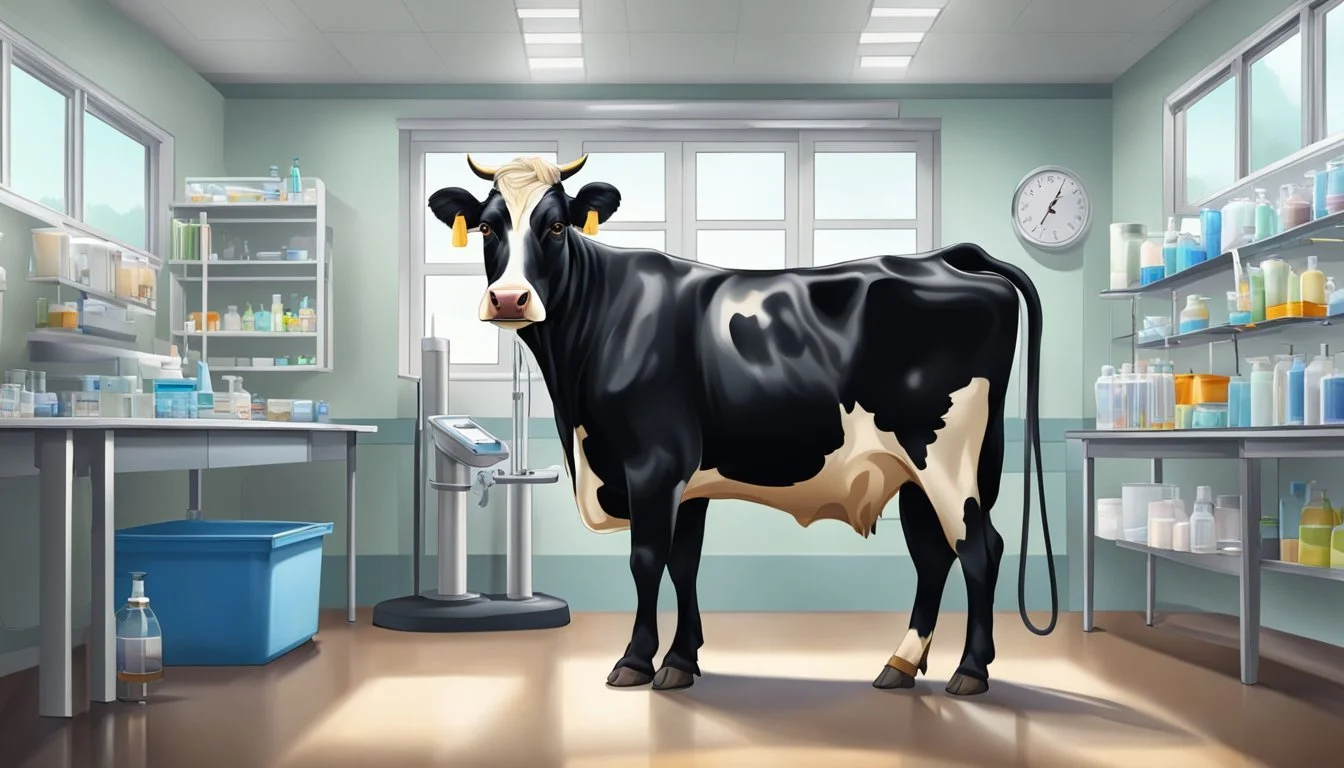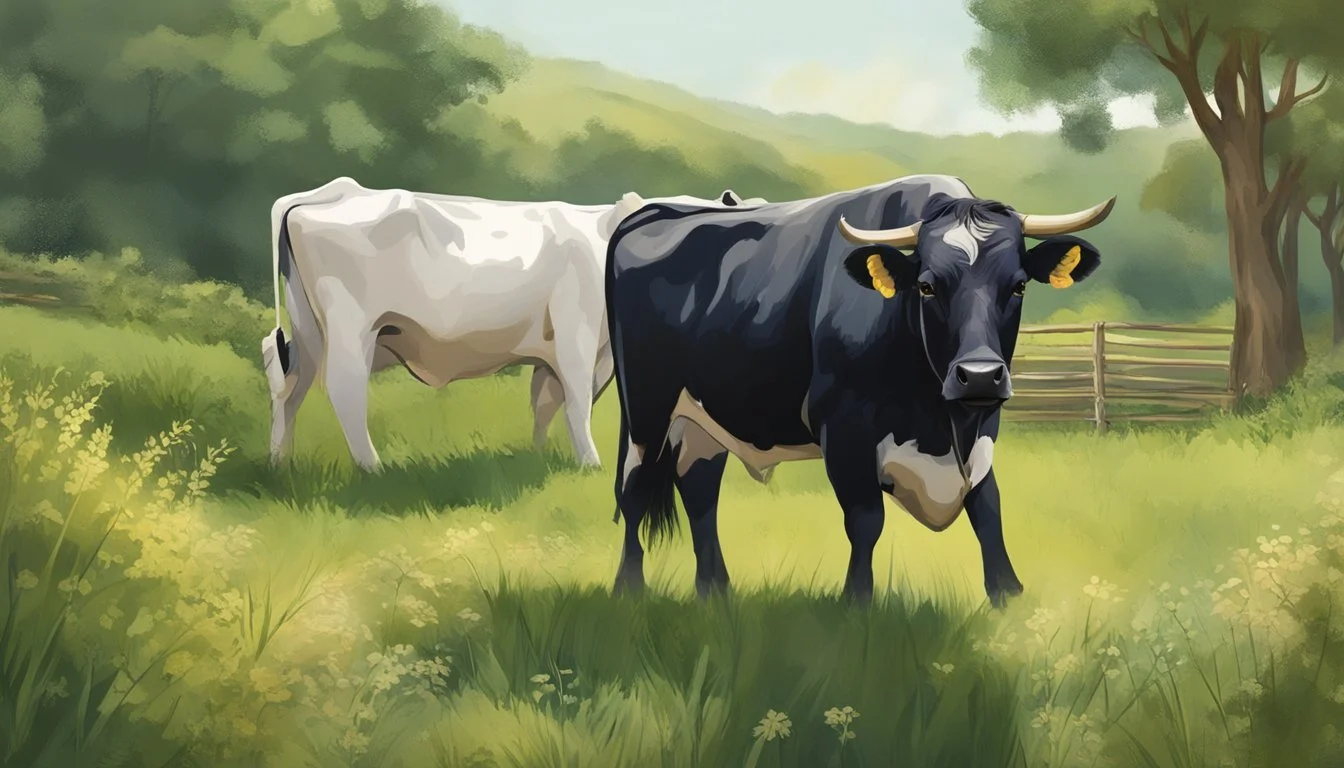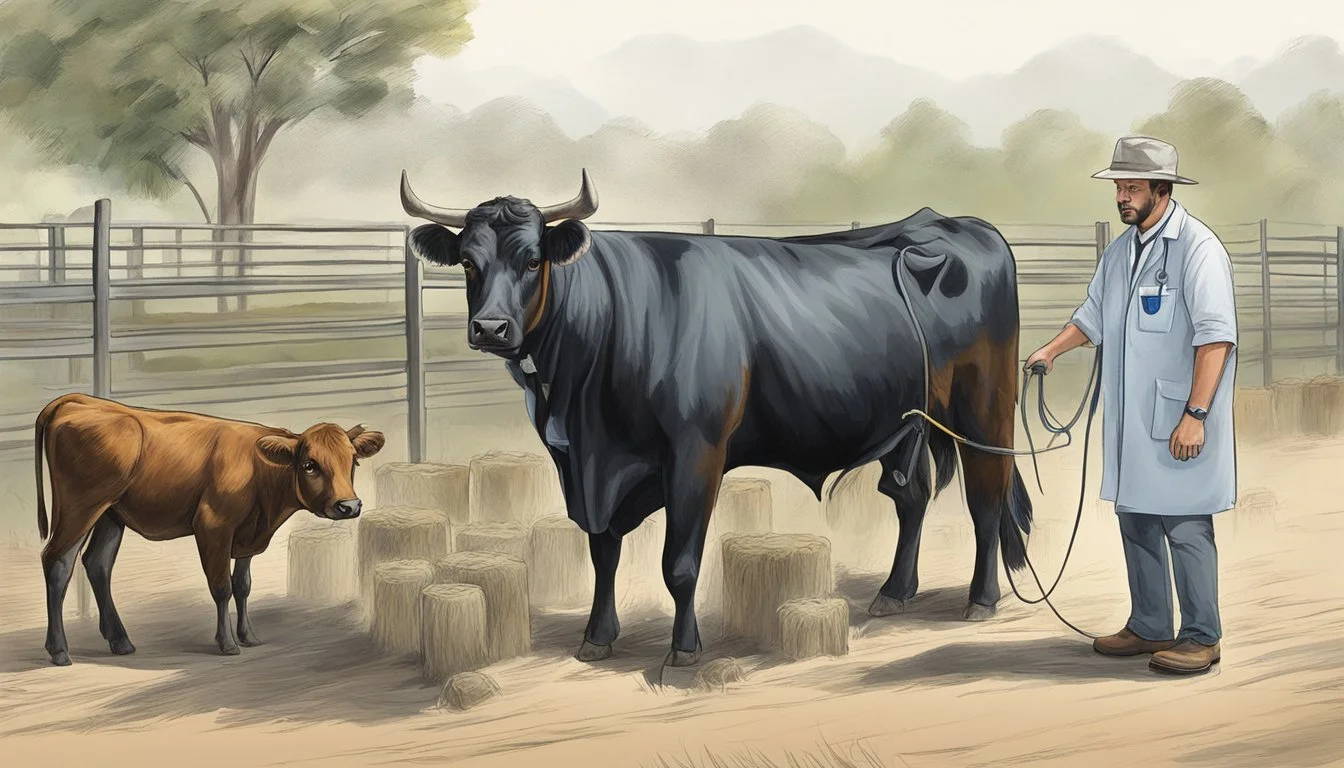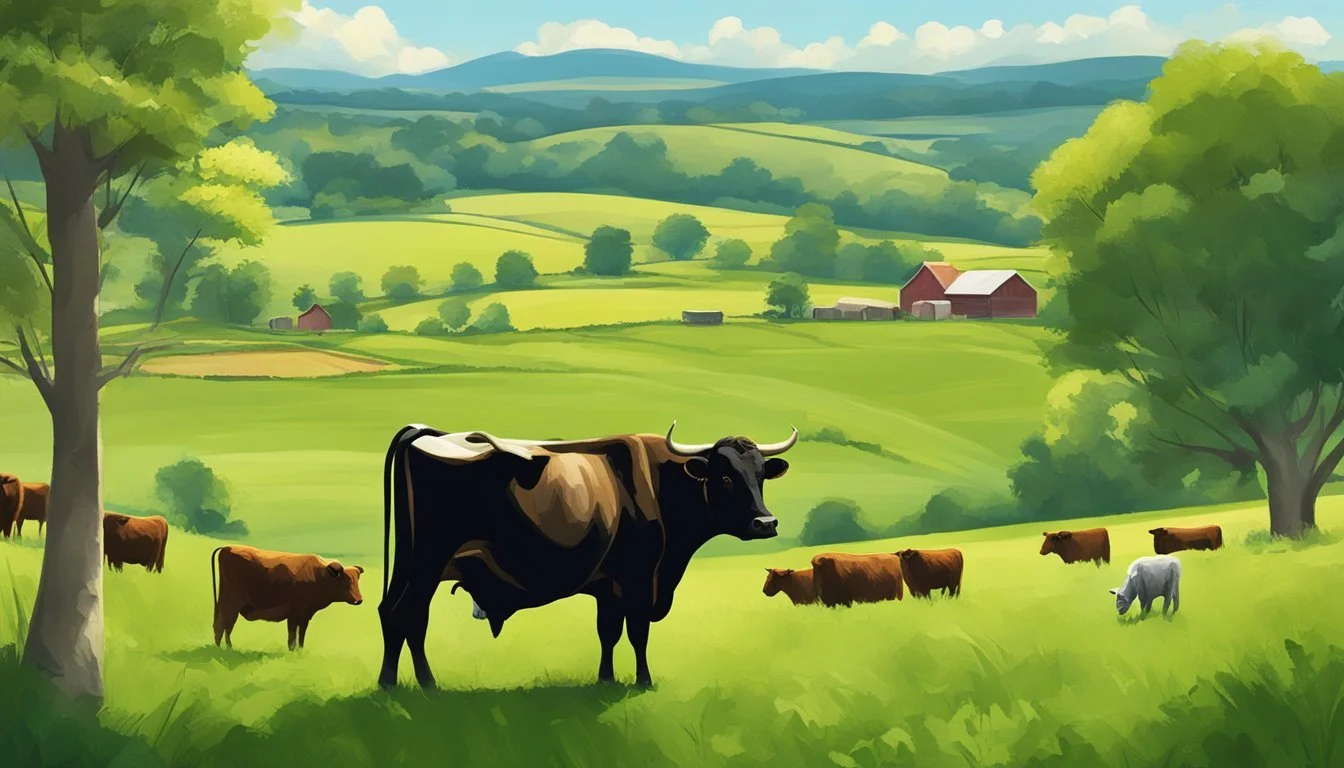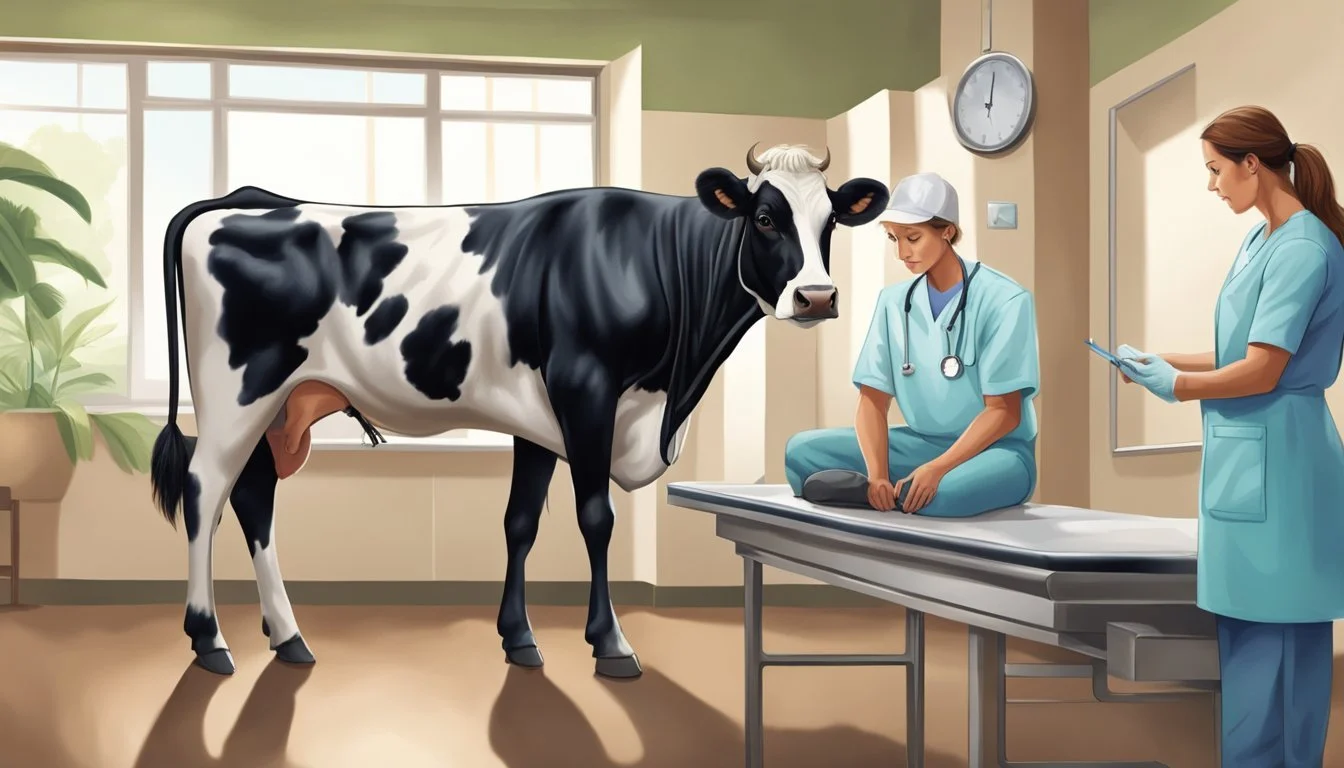The Economics of Dexter Cattle
Streamlining Veterinary Expenses for Small-Scale Farming
Dexter cattle, a versatile breed originating from Ireland, are known for their dual-purpose capabilities, providing both meat and milk. Unlike larger breeds, Dexters require less feed and space, making them a preferred choice for small-scale farmers and those practicing sustainable agriculture. Economic analysis of Dexter cattle is crucial as it sheds light on their cost-effectiveness in terms of veterinary care and overall production. By assessing the direct and indirect costs associated with their maintenance and healthcare, producers can make informed decisions to maximize profitability and ensure the herd's wellbeing.
The cost of veterinary care is a significant component of livestock production expenses. Dexter cattle are noted for their hardiness and adaptability, which often translates into lower veterinary costs when compared to other cattle breeds. However, proactive health measures such as vaccinations and regular check-ups remain essential to prevent costly outbreaks of diseases. Understanding the economic implications of such preventative measures can help farmers allocate resources effectively. Analysis of the cost-effectiveness of various veterinary practices is vital in determining the most financially viable options for maintaining the health of Dexter herds without compromising their productivity.
Assessing the overall costs of raising Dexter cattle—from feed, housing, labor, to veterinary care—provides a comprehensive view of their economic impact. Cost-effective veterinary care, specifically, can significantly influence the long-term financial success of Dexter cattle production. Decisions made regarding healthcare practices must consider both the immediate and future economic benefits. Employing a thorough cost-benefit analysis can identify strategies that both protect the health of the livestock and align with the economic goals of the operation. In this way, Dexter cattle can continue to be a sustainable and profitable option for farmers around the world.
Overview of Dexter Cattle
Dexter cattle, originating from Ireland, are one of the smallest cattle breeds, renowned for their versatility as both beef and dairy animals. They exhibit remarkable sustainability due to their adaptability to various climate conditions and efficient resource utilization.
Key Characteristics:
Size: Small stature, making them ideal for smaller farms.
Lifespan: Up to 25 years, with high reproductive efficiency.
Beef and Dairy Production:
Meat Qualities: Dexter beef tends to be darker with excellent marbling, fine-grained and tender.
Dairy Benefits: The breed also produces a satisfactory quantity of milk with high butterfat content, often deemed suitable for cheese making.
Animal Welfare and Management:
Due to their size, Dexter cattle require less space and food, contributing to a lower cost of maintenance. Their generally docile temperament facilitates easier handling and care, aligning with animal welfare principles.
Sustainability:
Dexter cattle are efficient foragers, thriving on less pasture, thus conserving environmental resources. Their longevity and fertility contribute to a sustainable growth cycle for the breed within farming operations.
Thus, Dexter cattle represent a cost-effective choice for small-scale farmers requiring minimal inputs, while offering dual-purpose utility in meat and dairy production, championing a balance of animal health and economic viability.
Veterinary Care: Core Principles and Practices
In managing the health of Dexter cattle, the role of veterinary care is multifaceted, encompassing preventative measures, disease management, and an economic understanding of delivering cost-effective care.
Preventative Measures and Health Monitoring
Vaccinations are the cornerstone of preventive veterinary care for Dexter cattle, pivotal for safeguarding against common livestock diseases. A structured vaccination program can significantly reduce the incidence of illness, promoting herd immunity and contributing to public health. Regular health monitoring, including observation for signs of mastitis or other conditions, is essential. This proactive approach minimizes the progression of diseases and reduces the need for more expensive treatments.
Disease Management and Treatments
When disease occurs, timely and effective management is crucial. Treatments may include the judicious use of antibiotics to combat bacterial infections. However, it's important to adhere to proper usage guidelines to prevent antibiotic resistance, a significant public health concern. Veterinarians are vital in diagnosing and prescribing appropriate treatments for conditions such as mastitis or other livestock diseases, ensuring the health of the animal and minimizing economic losses.
Veterinary Economics: Balancing Cost-Effective Care
The economics of veterinary care often necessitate a balance between optimal animal health and financial constraints. Cost-effective care involves the efficient use of resources, whether it's for preventative vaccines or treatment interventions. With a reported shortage of veterinarians in rural areas, the accessibility and affordability of veterinary services are central to the maintenance of animal health in the Dexter cattle industry. Utilizing experienced veterinarians and making strategic decisions on animal health expenditures are key to economic sustainability.
Feeding and Nutrition Strategies
In the economic management of Dexter cattle, feed costs represent a significant portion of the total expenses. Effective strategies for feeding and nutrition are crucial to optimize the value of both harvested and grazed feed, ensuring cost-effective veterinary care.
Optimizing Feed Costs
To effectively manage feed costs for Dexter cattle, farmers should focus on the feed conversion efficiency (FCE). Feed conversion efficiency is a measure of an animal's ability to convert feed mass into increased body mass. Since Dexter cattle are smaller, they can often be more feed-efficient compared to larger cattle breeds, meaning they require less feed per pound of weight gain. Farmers should compare the costs of different feed types and calculate the economic return on these feeds based on the weight gain of the cattle.
Forage Quality: The use of high-quality forage can decrease the amount of concentrated feeds needed.
Feed Purchases: Buy in bulk where possible to reduce costs and ensure a consistent supply.
Feeding Practices: Implement controlled feeding practices to minimize waste.
Supplementation and Pasture Management
Supplemental feeding can be instrumental in ensuring that Dexter cattle meet their nutritional needs, especially when pasture quality is not adequate. The type of supplementation, whether it's minerals, vitamins, or bypass fat, will depend on the existing dietary content and the specific requirements of the cattle.
Pasture Rotation: Implementing a rotational grazing system can help improve the quality and availability of grazed feed and reduce the reliance on harvested feeds.
Nutrient Management: Regular soil testing and pasture assessments can guide the supplementation of nutrients to optimize pasture growth and cattle health.
By carefully managing both harvested and grazed feed through these strategies, farmers can enhance the economic sustainability of their Dexter cattle operations.
Breeding and Reproduction Management
Effective breeding and reproduction management in Dexter cattle is pivotal for maximizing economic returns, with a focus on strategic genetic selection and meticulous care of bulls and replacement heifers. These foundational practices ensure a robust breeding program, directly influencing the economic viability of Dexter cattle operations.
Genetic Selection and Breeding Programs
Genetic selection plays a crucial role in Dexter cattle reproduction management. Breeders aim to enhance traits that contribute to reproductive efficiency, such as calving ease and milk production, which are economically beneficial. Economic impact is further realized by implementing systematic breeding programs that encompass:
Synchronized breeding cycles: Aligning estrous cycles through methods like prostaglandin administration.
Predictable gestation: Dexter cattle's gestation typically spans 279 to 287 days, with heifer calves often born slightly earlier than bull calves.
Data management: Utilizing farm data to inform genetic selection and breeding practices for better herd performance.
Care of Bulls and Replacement Heifers
Maintaining the health and vigor of Dexter bulls is critical for a successful breeding program. Bulls require:
Nutrition: Sufficient, balanced diets for optimal reproductive function.
Health: Regular veterinary care to prevent diseases that can impair fertility.
Replacement heifers are the future of the cattle operation and warrant:
Age considerations: They should be bred at an appropriate age and weight to ensure future productivity.
Genetic health checks: To safeguard against congenital issues that could affect reproductive capability and future progeny.
Through diligent attention to these areas, Dexter cattle breeders can achieve a cost-effective balance between animal welfare and economic demands.
Economic Analysis and Profitability
Profitability in Dexter cattle farming hinges on careful economic analysis, focusing on both revenue streams and the cost profile. Dexter cattle are renowned for their smaller size, which can translate to lower feed and land costs compared to larger breeds, offering a unique economic advantage.
Market price plays a pivotal role in the economic dynamics of Dexter cattle. Farmers can garner income from the sale of meat and breeding stock, with premium prices often achieved due to the breed's quality and specific market demand. This, combined with the breed's productive nature, boosts the income side of the equation.
When considering expenses, Dexter cattle typically incur lower veterinary costs due to their hardiness, reducing the investment necessary for healthcare when compared to other breeds. However, as suggested by recent trends, a rise in input costs, such as higher interest rates, can impact the overall expenditure of the operation.
Investment needs, such as infrastructure and breeding stock acquisition, must be accounted for to ensure viable return on investment (ROI).
Routine expenses include feed, labor, equipment, and healthcare.
Cost Component: Feed
Dexter Cattle Advantage: Lower due to size
Cost Component: Labour/Equipment
Dexter Cattle Advantage: Variable
Cost Component: Veterinary Care
Dexter Cattle Advantage: Potentially lower
Cost Component: Market Price
Dexter Cattle Advantage: Often premium
The economic cost of raising Dexter cattle should be balanced against their revenue potential from meat and breeding activities. Sound management practices can improve productivity, directly correlating to a healthier ROI. The breed's resilience and marketability can contribute to a lower breakeven point, making it an appealing choice for farmers seeking to maximize economic efficiency.
Sustainable Farming Practices and Environmental Considerations
Sustainable farming practices in Dexter cattle production interlink economic viability with environmental stewardship. The implementation of such practices seeks to reduce negative externalities while promoting a balance with ecosystems and adapting to climate change.
Balance Between Agriculture and Ecosystems
Dexter cattle farmers are increasingly aware that livestock production must operate in harmony with the natural environment to maintain long-term sustainability. They are adopting integrated farming systems such as:
Agroforestry: Incorporating trees into pasturelands which provides shade, improves biodiversity, and enhances soil quality.
Rotational Grazing: Moving cattle between pastures to prevent overgrazing and allow for vegetation recovery.
These strategies help preserve the integrity of ecosystems while supporting agricultural production that is resilient and sustainable.
Climate Change Adaptation Strategies
Farmers are employing strategies to adapt their Dexter cattle operations to the challenges posed by climate change. Strategic practices include:
Water Resource Management: Utilizing rainwater harvesting and efficient irrigation methods to ensure water availability during dry periods.
Breeding for Resilience: Selecting cattle breeds and traits that are more tolerant to heat stress and fluctuating weather conditions.
By incorporating these methods, Dexter cattle farming can contribute to the mitigation of climate change impacts and foster an environmentally-resilient culture within the sector.
Market Dynamics and Trade
The focus of this section is to unpack the intricacies of Dexter cattle trade, market value influences, as well as the implications of marketing strategies within the economy.
Local and International Markets
Local and international markets for Dexter cattle vary significantly, influenced by regional demand, production costs, and trade regulations. Locally, Dexters are often marketed as versatile, smaller-breed cattle suitable for meat, milk, and breeding purposes, appealing to small-scale farms and niche markets. Internationally, the market value can fluctuate based on import and export dynamics, currency exchange rates, and global demand for specialty beef. Producers must navigate these variables to maximize profitability and sustain trade relationships.
Marketing Strategies and Value Chain Management
Effective marketing strategies are crucial for Dexter cattle owners to ensure their livestock yield a strong market value. They must focus on aspects such as product differentiation, emphasizing the unique qualities of Dexter cattle, such as their smaller size and efficiency of production. Value chain management plays a pivotal role, where every step from breeding, raising, and processing must be streamlined for efficiency. By adopting strategic marketing and rigorous value chain management, producers can influence markets and economy positively while ensuring a viable trade for their cattle.
Resource Management
In managing a Dexter cattle operation, resource management is critical in maintaining both economic sustainability and productivity. Key focus areas include the wise investment of financial resources into equipment and ensuring labor efficiency.
Financial and Equipment Investment
Financial investment in a Dexter cattle operation covers numerous aspects, from purchasing livestock to acquiring essential equipment. The primary investments typically include:
Livestock purchase: Each Dexter cow or bull represents a considerable capital investment.
Equipment: Necessary equipment might range from feeding troughs to veterinary tools, ensuring proper care and management of the cattle.
Infrastructure: Barns, fences, and handling facilities to ensure a secure and efficient environment.
Veterinary care: Preventive care, such as vaccinations and routine health checks, which contribute to the overall health and longevity of the herd.
The unit cost of production can be reduced with strategic investments in durable equipment that stands the test of time, offsetting initial costs with long-term savings and increased productivity.
Manpower and Labor Efficiency
Labor constitutes a significant share of the operational costs in any livestock operation. Efficient management includes:
Training staff in best practices, from feeding to disease prevention.
Utilizing technology for tasks like inventory management, reducing the time spent on manual records.
Workshops and continuous education to keep laborers informed about the latest care and management strategies, which can improve overall herd health and productivity.
Productivity is enhanced when the labor force is well-trained and equipment is properly maintained, leading to smoother day-to-day operations and potentially reducing the need for costly emergency interventions.
Cattle Health Economics and Policy
In the domain of agricultural economics, the health of livestock like Dexter cattle plays a pivotal role in influencing both welfare standards and economic outcomes. Effective policies can significantly enhance veterinary care services, improve animal health metrics, and mitigate the spread and impact of livestock diseases.
Economic Analysis of Livestock Diseases
The direct and indirect costs associated with livestock diseases are substantial for farmers and the agriculture industry at large. Economic analysis focuses on quantifying these costs, which extend beyond immediate veterinary expenses to include:
Production Losses: Diseases impact livestock products yield, such as milk or meat output, diminishing overall productivity.
Surveillance Measures: Implementing disease surveillance systems incurs costs but is critical for early detection and management.
Public Health Concerns: Zoonotic diseases necessitate expenditures on public health measures to prevent transmission.
A comprehensive economic assessment considers the trade-offs between the cost of interventions and the benefits of improved cattle health and performance metrics.
Policy Impact on Veterinary Care Accessibility
Policymaking intersects with cattle health economics by shaping the accessibility and quality of veterinary services. It serves to:
Regulate Practices: Policies such as the Veterinary Feed Directive are implemented to govern the use of antimicrobials and other feed additives, balancing animal welfare with public health concerns.
Support Infrastructure: Government subsidies or incentives may be provided to establish and maintain veterinary care infrastructures, especially in underserved regions.
The effectiveness of these policies is often measured by their ability to sustain livestock health while ensuring the economic viability of cattle production.
Case Studies and Comparative Economics
Considering the Dexter cattle breed, this section explores the economic nuances of veterinary care, contrasting local and global practices and identifying industry benchmarks.
Local vs Global Veterinary Care Practices
In rural areas, especially within developing countries, Dexter cattle owners are often challenged by limited resources. A study of small-scale farmers in Sub-Saharan Africa indicated that the cost-effective management of lumpy skin disease hinges upon local veterinary care practices. In contrast to global strategies, local vets rely on familiar, cost-effective methods—sometimes traditional—that maximize limited resources. The sustainability of local veterinary practices is critical for the economic development of these regions.
Economic Analysis of these practices stress their efficiency in minimizing economic losses while sustaining cattle health, which in part underpins rural economic stability. In the UK, for example, optimal disease response strategies balance socioeconomic well-being with the impacts of trade limitations due to disease outbreaks.
Industry Benchmarks and Success Stories
Dexter cattle breeders often look to industry benchmarks to measure the effectiveness of their veterinary care. Success stories typically highlight significant economic savings through the implementation of careful disease management and proactive health strategies.
For instance:
Economic Opportunities Forgone: Studies have identified the unawareness among cattle producers of the costs incurred from diseases like mastitis.
Antibiotic Growth Promoters: US swine industry benchmarks have outlined the cost increases due to the removal of antibiotics, ranging from an additional $0.59 to $2.33 per pig, with varying impacts on net profits.
The sector continually assesses such benchmarks to ensure veterinary care remains both cost-effective and high in quality, fostering a resilient Dexter cattle industry.
Conclusion and Future Perspectives
In the realm of Dexter cattle farming, there lies a significant potential for bolstering food security and contributing to economic development. These small, versatile animals are suited for small-scale operations, offering a sustainable option for families and small farmers. Their lower maintenance and feed requirements, compared to larger dairy or beef breeds, fit well into the framework of cost-effective veterinary care.
Advancements in agriculture technology and genomic research promise to enhance the productivity and health profiles of Dexter cattle. Selective breeding programs, informed by genomic analysis, could lead to animals with greater resistance to diseases, thereby reducing veterinary costs and increasing herd longevity. This would directly correlate to wealth generation for small-scale farmers, optimizing returns on investment.
The economic development of rural areas can gain from the utilization of Dexter cattle. As a dual-purpose breed, these cattle are a source of both meat and milk, contributing to the diversified income streams for farm households. Focused efforts in educating farmers on preventive healthcare, disease management, and genetic selection will be central to achieving economic sustainability.
Lastly, as Dexter cattle gain popularity, there is a call for a more comprehensive approach to tracking health trends and economic impacts. Data collection and analysis could benefit individual farmers and the industry as a whole. An ongoing assessment and adaptation of veterinary practices will be imperative to maintain the breed's viability and profitability in the changing agricultural landscape.

